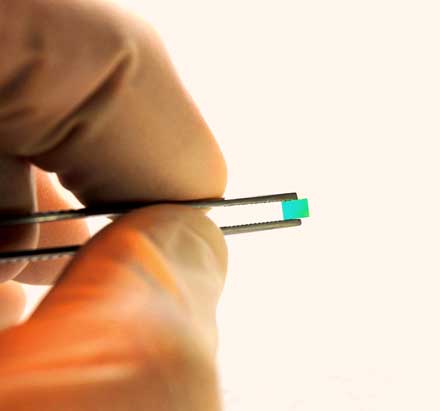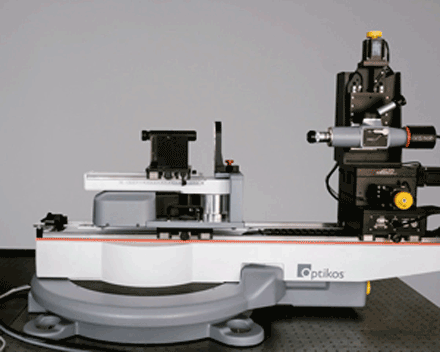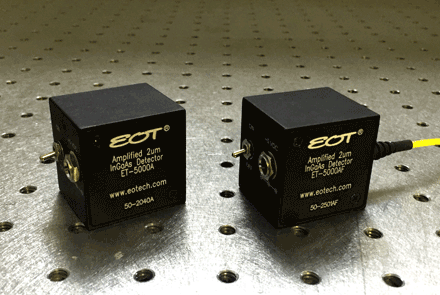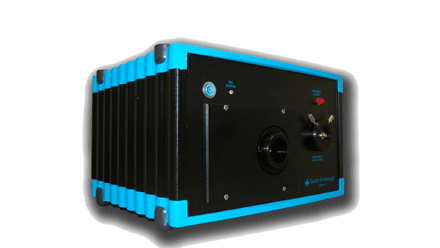|
|
Wednesday, November 8, 2017
|
Monthly newsletter from the editors of Photonics Spectra, with features, popular topics, new products, and what's coming in the next issue. Manage your Photonics Media membership at Photonics.com/subscribe.
|
|
|
| sponsor |

|
|
Laser Light Source Delivers Superior Optical Control
Laser diode-pumped phosphor light sources utilize a high-power blue InGaN laser diode to excite a very small phosphor target — about 300 µm diameter. The phosphor converts the laser light to broad-spectrum, incoherent white light, eliminating laser eye-safety risk. The small phosphor spot size allows for greater optical control of the down-converted white light emission. As a result, extremely narrow beam angles can be created. The resulting sources are the smallest and most intense solid-state light sources commercialized for lighting applications, with luminance that is up to 10× that of the brightest LEDs.
|
|
|
|
|
|
Terahertz Window Offers Untapped Potential
Sandwiched between the infrared and microwave parts of the electromagnetic spectrum lies the terahertz window — a valuable and largely untapped portion of energy that can reveal a huge variety of unknowns, from hidden weapons and suspicious foreign objects to the thickness of paint and quality of medicine.
|
|
|
|
|
|
 Wearables for Work
Wearables for Work
While consumer goods such as smart watches and glasses attract attention, demand for wearable computing devices for enterprise, industrial and professional applications is also growing. Because such devices are connected computers, they enable users to carry a PC or tablet around while interacting with it hands-free. Therefore, they could benefit factory and logistics workers who need real-time data but cannot readily consult a tablet. Medical professionals and maintenance personnel could likewise use the information a wearable provides.
|
|
|
|
|
|
 Diffraction Grating Solutions
Diffraction Grating Solutions
Optometrics Corporation
Diffraction efficiency and dynamic range are critical parameters in many spectrometric instrument designs. Understanding why a particular reflective or transmission diffraction grating may have small yet necessary performance differentiation for instrument optimization success can be critical.
Visit Website
Request Info
|
|
|
 New Testing Modules and Software Features Added to OpTest® System
New Testing Modules and Software Features Added to OpTest® System
Optikos Corporation
OpTest® Lens Measurement Systems perform tests in situations similar to actual applications, replicating field angle positions, conjugate ratios, spectral regions and image plane architecture. Lens assemblies that may be measured on OpTest systems run the gamut from the typically large surveillance lenses used in the the aerospace and defense sectors to very small lenses used in medical instruments.
Visit Website
Request Info
|
|
|
|
|
|
 >10GHz Amplified Photodetectors
>10GHz Amplified Photodetectors
Electro-Optics Technology Inc.
EOT’s >10GHz Amplified Photodetectors feature a large bandwidth, high gain, and compact size to meet all your application needs including ultrafast, heterodyne, and high frequency applications. The >10GHz Amplified Photodetectors will provide you with a fast, amplified photodetector that can measure low power, ultrafast pulses at an affordable price.
Visit Website
Request Info
|
|
|
 Alluxa Ultra Series Filters and Coatings
Alluxa Ultra Series Filters and Coatings
Alluxa
Alluxa Ultra Series Filters, including Narrowband, Dichroic, UV, IR, and Notch filters, provide the highest performance optical thin film solutions available today. For example, the Ultra Series Flat Top Narrowband filters offer the narrowest bandwidths and squarest filter profiles in the industry.
Visit Website
Request Info
|
|
|
|
|
|
 The Aries Spectroradiometer
The Aries Spectroradiometer
Gooch & Housego Orlando
We are proud to introduce our next generation spectroradiometer, the Aries. Based on the proven design and performance of the OL 770, the Aries offers an array of enhanced capabilities, including WiFi and Ethernet connectivity for easy integration into production environments.
Visit Website
Request Info
|
|
|
 High Brightness Fiber-coupled Diode Laser
High Brightness Fiber-coupled Diode Laser
PhotonTec Berlin GmbH
New high power and brightness fiber-coupled diode lasers at 915nm and 976nm provide more power up to 150W from a single 105µm/0.22NA fiber and up to 210W from a single 200µm/0.22NA fiber. With the same package the power of wavelength stabilized diode laser at 976nm reaches max.
Visit Website
Request Info
|
|
|
|
|
|
 Sputtered Metal Deep-UV Interference Filters
Sputtered Metal Deep-UV Interference Filters
Chroma Technology Corp.
Chroma Technology’s sputtered metal UV interference filters offer the highest levels of Deep UV transmission of any UV metal coated filters available. Coupled with the broad out-of-wavelength blocking provided by metal filters ( >OD4 through the Deep-IR), they’re excellent choices for transmitting UV mercury and cadmium lines from discharge lamps, excimer lamp and laser lines and nitrogen lasers.
Visit Website
Request Info
|
|
|
|
|
3D Printing Technique Makes Degradable Biomaterials
A stereolithographic technique has been developed for making 3D-printed biomaterials that can undergo controlled degradation. This technique uses noncovalent (ionic) crosslinking and could potentially enable the fabrication of adaptive and stimuli-responsive biomaterials for use in biosensing, drug delivery and tissue engineering applications.
|
|
|
|
|
|
A team at Rice University has patterned a thin film of laser-induced graphene (LIG) on a block of pine using CO2 laser scribing. Previous iterations of LIG have been made by heating the surface of a sheet of polyimide with a laser.
|
|
|
|
A breakthrough in rapid polarization switching with an all-optical polarization control could allow faster data transfer and open new areas of nanoresearch, enabling researchers to learn more about unseen nanoscale worlds such as drug chemistry and quantum electronics.
|
|
|
|
Next Generation 3D Printing: The Emergence of Enabling Materials
Wed, Nov 15, 2017 10:00 AM - 11:00 AM EST
KIT principal investigator Bastion Rapp, Ph.D., will introduce his lab's prototype and process for enabling freeform generation of highly transparent fused silica glass components using 3D printers. Rapp will discuss potential applications for 3D printed glass, ranging from 3D printing of complex lenses for smartphone cameras and next-generation microprocessors to intricate glass panels for use in building construction. While additive manufacturing and 3D printing have seen significant improvements in processing and instrumentation, the choice of materials for use in AM and 3D printing has not increased significantly. Rapp will also discuss how the emergence of enabling materials for 3D printing could revolutionize use of this technology.
|
|
|
|
Features
Vertical External Cavity Surface-Emitting Lasers; OLED Displays; Interferometry; Microlens Arrays; Nanotechnology Test & Measurement
Issue Bonus
SPIE Photonics West Insider’s Guide: Exhibitor Profiles
Photonics Media is currently seeking technical feature articles on a variety of topics for publication in our magazine Photonics Spectra. Please submit an informal 100-word abstract to Managing Editor Mike Wheeler at michael.wheeler@photonics.com or use our online submission form www.photonics.com/submitfeature.aspx.
|
|
|
 Since 1967, Photonics Spectra magazine has defined the science and industry of photonics, providing both technical and practical information for every aspect of the global industry and promoting an international dialogue among the engineers, scientists and end users who develop, commercialize and buy photonics products.
Since 1967, Photonics Spectra magazine has defined the science and industry of photonics, providing both technical and practical information for every aspect of the global industry and promoting an international dialogue among the engineers, scientists and end users who develop, commercialize and buy photonics products.
Visit Photonics.com/subscribe to manage your Photonics Media membership.
View Digital Edition
Manage Membership
|
|
|
|
|
|